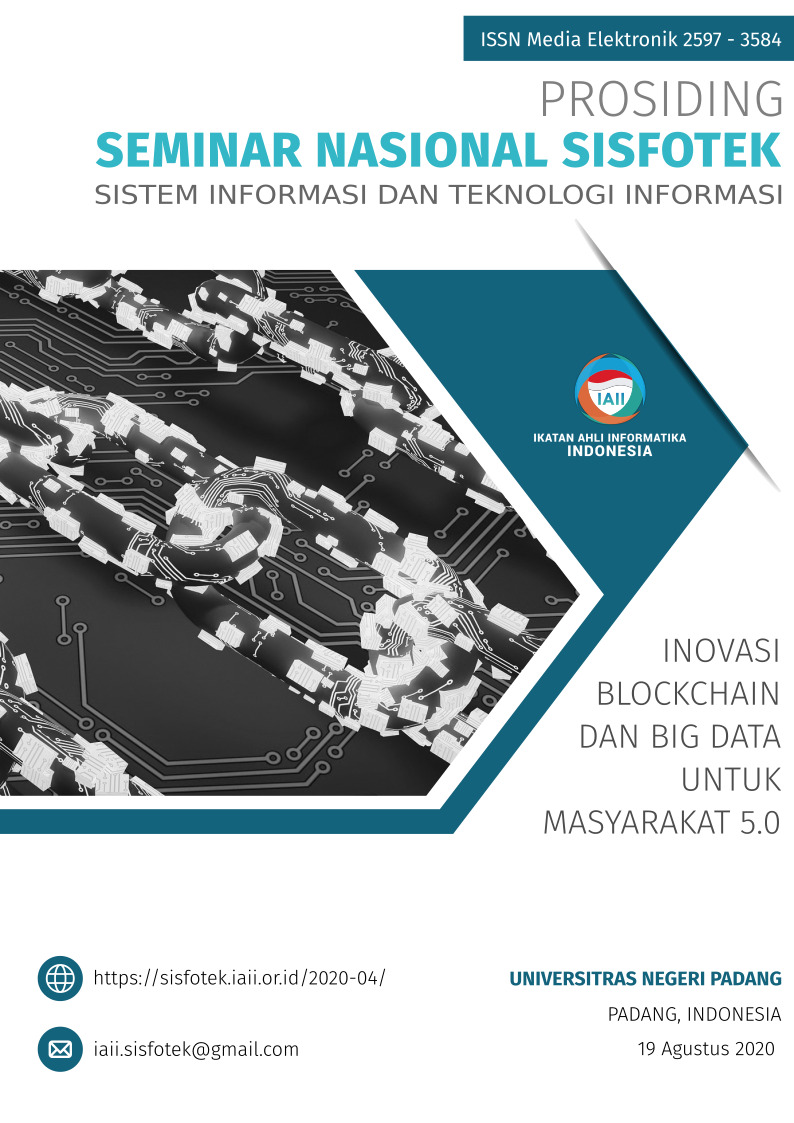Optimalisasi Penggunaan Pendingin Ruangan Sistem Kelas Cerdas
Keywords:
smart building, internet of things, optimization, microcontroller, sensorsAbstract
Optimizing the use of electronic devices such as air conditioning is very important to avoid high costs due to the use of electricity in classrooms. This can be done by regulating its use only when the classroom is in use. There are two sufficient conditions to arrange it, namely when there is a teaching schedule and there are students in the class. By utilizing IoT technology, a cooling control system to regulate electricity usage such as air conditioning can be done. The IoT device used is a laser sensor or PIR to detect the presence of people, temperature, and humidity sensors, infrared sensors to turn the cooling system on or off. All sensors are connected to the Arduino microcontroller which forwards the collected data to the Firebase database via the internet. Android smartphones are used to embed smart class applications that control the cooling system control configuration, monitor, and view the history of cooling system usage via data stored in Firebase. When creating a class schedule consisting of class names and class usage time, there is a threshold for the minimum number of students in the class to regulate 2 cooling system devices. The detection test for the presence of students entering and leaving the classroom was carried out using a laser sensor and a PIR sensor with a success rate of 50% and 100% respectively, for 10 consecutive attempts, although the laser sensor is more accurate, it requires accurate sensor placement as well forget better results. The cooling control system was tried out for 5 days, Monday - Friday, based on a simulated classroom usage schedule, two cooling systems that were active for 7.5 hours from 60 hours per week, or the equivalent of 13% of the total active and inactive class time. The electricity cost incurred for only 2 coolers is IDR 54,960 / month compared to the total expenditure of IDR 439,680 / month, or equivalent to IDR 43,968,000 for 100 rooms / month. The built-in cooling control system can overcome high costs due to turning on the cooling system when not in use.
References
[2] Yuanchun Shi, Weikai Xie, Fang Liu, The Smart Classroom: Merging Technologies for Seamless Tele-education, IEEE Pervasive Comput, 2003.
[3] Arun Viswanath, Vikas Chadan, Kumar Saurav, An IoT Based Data Driven Pre-Cooling Solution for Electricity Cost Savings in Commercial Buildings, IEEE Internet of Things Journal, pp (99):1-1 · February 2019.
[4] Suo Y., Miyata N., Ishida T., Shi Y. (2008) Open Smart Classroom: Extensible and Scalable Smart Space Using Web Service Technology. In: Leung H., Li F., Lau R., Li Q. (eds) Advances in Web Based Learning – ICWL 2007. ICWL 2007. Lecture Notes in Computer Science, vol 4823. Springer, Berlin, Heidelberg. https://doi.org/10.1007/978-3-540-78139-4_38.
[5] Manny-Ikan, Edith & Dagan, Osnat & Berger- Tikochinski, Tal & Zorman, Rachel. (2011). Using the Interactive White Board in Teaching and Learning – An Evaluation of the SMART CLASSROOM Pilot Project. Interdisciplinary Journal of e-Skills and Lifelong Learning. 7. 249-273. 10.28945/1523.
[6] A. Chaudhari, B. Rodrigues and S. More, "Automated IOT based system for home automation and prediction of electricity usage and comparative analysis of various electricity providers: SmartPlug," 2016 2nd International Conference on Contemporary Computing and Informatics (IC3I), Noida, 2016, pp. 390-392, doi: 10.1109/IC3I.2016.7917995.
[7] T. Parthornratt, N. Burapanonte and W. Gunjarueg, "People identification and counting system using raspberry Pi (AU-PiCC: Raspberry Pi customer counter)," 2016 International Conference on Electronics, Information, and Communications (ICEIC), Da Nang, 2016, pp. 1-5, doi: 10.1109/ELINFOCOM.2016.7563020.
[8] A. Vishwanath, V. Chandan and K. Saurav, "An IoT-Based Data Driven Precooling Solution for Electricity Cost Savings in Commercial Buildings," in IEEE Internet of Things Journal, vol. 6, no. 5, pp. 7337-7347, Oct. 2019, doi: 10.1109/JIOT.2019.2897988.
[9] Fernandes, Filipe & Morais, Hugo & Vale, Zita & Ramos, Carlos. (2014). Dynamic load management in a smart home to participate in demand response events. Energy and Buildings. 82. 592-606. 10.1016/j.enbuild.2014.07.067.
[10] D. Han and J. Lim, "Smart home energy management system using IEEE 802.15.4 and zigbee," in IEEE Transactions on Consumer Electronics, vol. 56, no. 3, pp. 1403-1410, Aug. 2010, doi: 10.1109/TCE.2010.5606276.
[11] J. Hosek, P. Masek, D. Kovac, M. Ries and F. Kröpfl, "Universal smart energy communication platform," 2014 International Conference on Intelligent Green Building and Smart Grid (IGBSG), Taipei, 2014, pp. 1-4, doi: 10.1109/IGBSG.2014.6835232.
[12] Introduction to NodeMCU, https://www.electronicwings.com/ nodemcu/basics, diakses online Juli 2020.
[13] NodeMCU, https://en.wikipedia.org/wiki/NodeMCU, online accessed July 2020.
[14] Yun, Jaeseok & Lee, Sang-Shin. (2014). Human Movement Detection and Identification Using Pyroelectric Infrared Sensors. Sensors (Basel, Switzerland). 14. 8057-81. 10.3390/s140508057.
[15] Pavithra B.G, Siva Subba Rao Patange, Sharmila A., Raja S., Sushma S. J. Characteristics of different sensors used for Distance Measurement. IRJET, Vol.04, Issue: 12, 2017.e-ISSN: 2395-0056.
[16] DHT11. www.geekbotelectronics.com, diakses online Juli 2020.
[17] KY-022 infrared receiver module. Copyright by Joy-IT Publisher CC BY-NC-SA 3.0. pp 97 dari 214.
[18] "Firebase Cloud Messaging". Google Developers. https://firebase.google.com, diakses online July 2020.
[19] Cara menghitung kebutuhan pemakaian PK AC sesuai ruangan. https://www.nationalelektronik.com, diakses online Juli 2020.
Downloads
Published
How to Cite
Issue
Section
License
http://creativecommons.org/licenses/by/4.0







